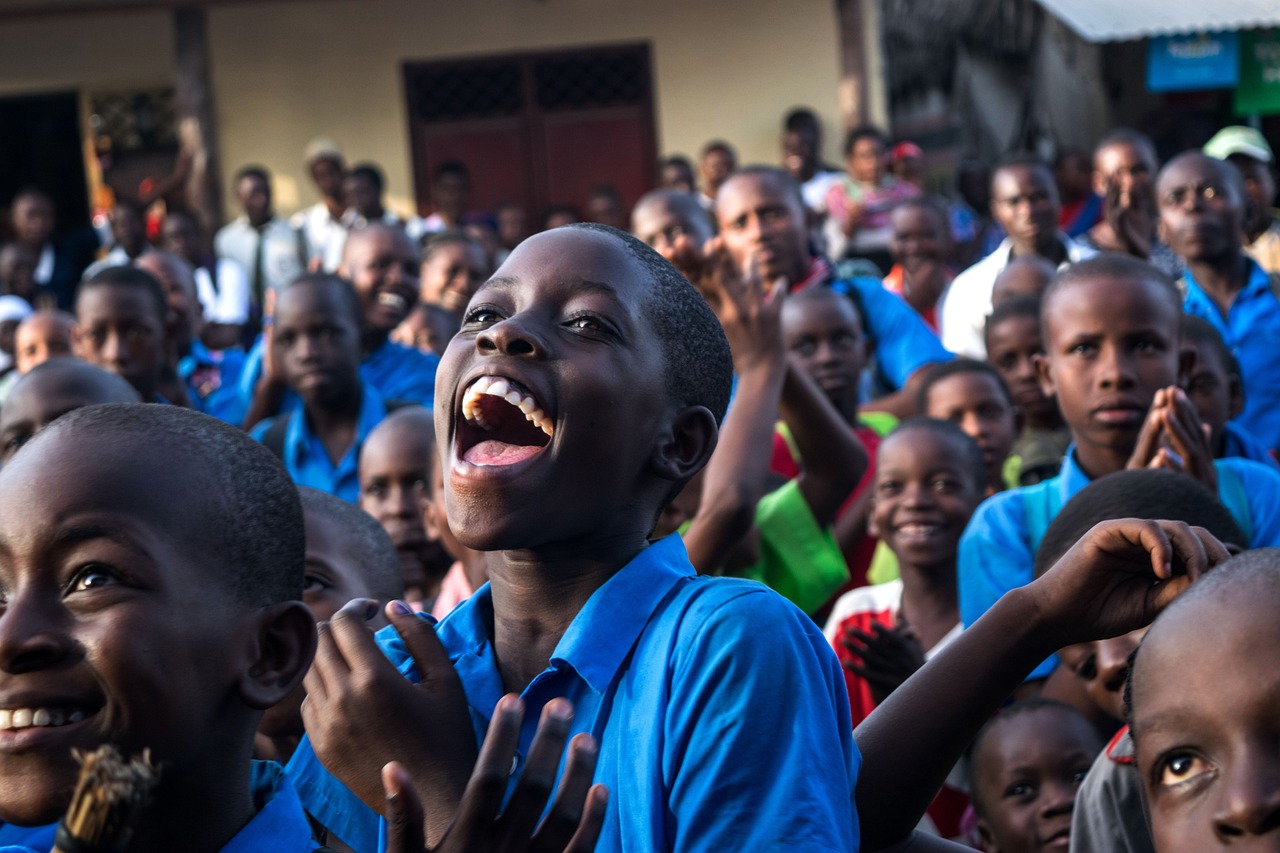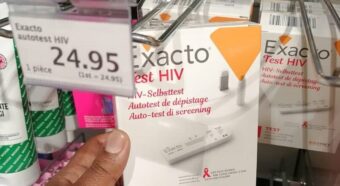Youth-Led Solutions: Engaging Young People in the Fight Against HIV, TB and Malaria
- May 21, 2024
- Africa / Armelle Nyobe / L'Initiative
- By Armelle Nyobe
- Read in French

Overview
According to UNESCO’s 2020 World Youth Report, there are 1.2 billion people in the 15-24 age group, representing 16% of the world’s population. In 2019, about 230 million young people (aged 15 to 24 years) were living in Africa, representing around 19% of the world’s youth population. If we include young people under the age of 25, it is expected that around 750 million people – representing about 42% of the total projected population of 1.8 billion in 2030 – will be young people, and they will be in Africa.
Even though young people in Africa represent a growing proportion of the population, political decisions are often taken without their participation. In many countries on the continent, young people are not represented at decision-making levels, and this is even more so when it comes to implementing projects, either due to tradition or to the fact that their supposed lack of experience works against them. The health sector in sub-Saharan Africa is no exception. Young people (aged 14 to 25 years) are hard-hit by malaria with children under the age of 5 accounting for 67% of malaria deaths; with teenagers and young adults also not being spared. Young people (aged 15 to 24 years) account for around 40% of new HIV infections. Yet, policy decisions about HIV and malaria are often taken without involving them in any way.
Youth Representation on the Agenda
The main focus of the Francophone meeting (traditionally organised by the French delegation and L’Initiative during Global Fund Board meetings) at the 51st Global Fund Board meeting in Geneva in April 2024, was intended to address this very issue of the need for youth representation in the Global Fund’s governance.
In her opening remarks, Her Excellency Anne-Claire Amprou, Global Health Ambassador, expressed her concern about the situation of children who seem to have been”abandoned” to their own fate, as the statistics are so worrying. The physiological, psychological and social consequences of the three major pandemics on this population group and its development are still neglected. Only half of HIV-infected children receive the antiretroviral treatment they need, against over 75% of adults (WHO).
Despite the significant progress achieved in the fight against the three major pandemics over the past decades, HIV, tuberculosis and malaria continue to disproportionately affect children, adolescents and young people, particularly young women and girls.
Children more vulnerable than ever
HIV
According to UNICEF, some 2.7 million children and adolescents live with HIV worldwide, with nearly 88% of them in sub-Saharan Africa. Although children represent only 4% of all people living with HIV, they account for 13% of AIDS-related deaths. Furthermore, in sub-Saharan Africa, 75% of new infections occurring among adolescents and young people involve girls and young women.
Malaria
Malaria remains one of the most alarming diseases in Africa, representing a significant burden for public health in the region. Sub-Saharan Africa bears almost 90% of the global burden of malaria. Children under the age of 5 are currently the group most vulnerable to malaria. They accounted for approximately 80% of malaria-related deaths in the WHO African Region in 2021. Two new vaccines approved in 2021 and 2023 have been added to existing malaria prevention methods for children, such as insecticide-treated bed nets and seasonal chemoprophylaxis. To tackle the malaria epidemic, 30 countries in Africa reportedly expressed an interest in the vaccine, and about a dozen of them have already started administering it, most of them via expanded immunization programmes.
Read : Cameroon shares its experience of the Malaria Vaccine Rollout
Tuberculosis
Every year, almost one million new cases of paediatric TB are recorded. According to WHO AFRO, children aged 0-14 account for 10% of reported cases of TB in sub-Saharan Africa. In addition, the number of undiagnosed cases is estimated at 68.2%, or nearly 70%, in the 0-4 years age group. To further underline the point, Dr Jean Louis Abena, TB specialist at the WHO Africa office, says that “61% of missing cases among children, all codes combined, are undiagnosed… so they die”. In Africa, the prevalence of paediatric TB poses a major public health challenge. These alarming figures underscore the need for urgent action to improve early detection, treatment and prevention of this disease in children.
Are these challenges intractable?
The international community is far from meeting targets for eliminating malaria, TB and HIV among young people. As regards HIV, for example, the cascade of the three 95s in children is 37-37-30, meaning that instead of 95% for the three trajectories, we have only reached 37% of children living with HIV who know their HIV status, 37% of these children are on life-saving antiretroviral treatment and 30% of children on treatment have an undetectable viral load. Only half of HIV-infected children receive the antiretroviral treatment they need, versus more than 75% of adults (WHO). This confirms that the results in the fight against the three diseases in children are still very worrying.
One of the reasons why we are heading for disaster is undoubtedly that young people are not strategically involved in the response to the three diseases. To address this shortcoming, UNICEF and, more recently, the Global Fund established youth councils to ensure a more appropriate response.
The Global Fund Youth Council
The Global Fund’s newly created Youth Council represents adolescents and young people in all their diversity. Announced at the Board meeting in November 2019, the council’s objective is to inform the Global Fund about the needs and challenges faced by young people in relation to HIV, TB, malaria and other aspects of their health and well-being. The Council members, mostly under the age of 25, live with or are affected by these diseases, and represent the diversity of young people, including key and vulnerable populations.
Amanda Dushime, the Youth Council representative at the 51st GF Board meeting who participated at the Francophone meeting, pointed at one of the reasons why the fight against the three diseases is failing. In her view, young people are called upon to make a pretty face at international meetings, but are rarely, if ever, involved in strategic decisions. Professor Mohamed Chakroun, Chair, Tunisia Country Coordinating Mechanism (CCM), seemed to agree with this view when he stated that, in terms of representation in CCMs, young people are under-represented or even not represented at all, which could be a hindrance to their involvement in the response to the three diseases.
The Burkina Faso example
Since March 2023, the leadership of Burkina Faso’s Country Coordinating Mechanism has been strengthened by the inclusion of young people. Siebou Coulibaly, Secretary General of the National Youth Council of Burkina Faso (CNJ-BF), an offshoot of the African Youth Charter, is a CCM member. The organisation that he represents within the CCM promotes the participation of young people in decision-making and in the life of the nation; it also represents the interests of young people at the national and international level, and supports youth organisations and associations in their institutional and organisational strengthening to improve the quality of their operations.
He states that, “for us young people, the issues of HIV, TB and malaria are concerns that affect young people and women more than anyone else. Among youth, there are realities that do not facilitate efforts to combat HIV, but our involvement can make a difference in the fight”. He points out that “the presence of youths in the CCM has enabled us to gain a better understanding of grants, to pass on information to young people, and to facilitate the participation and consideration of young people’s aspirations in the committees, in the decisions made and in their adherence to the process”.
He reveals that he only became fully aware of what was at stake when he joined the CCM, which he did not know about before. His involvement was the result of a call for applications. Once installed and informed of the activities and dynamics, he felt that, “the structure could not work without the presence and involvement of young people and women, and the challenges are so huge that they must be entrusted to the right people”. So he applied for the CCM’s vice-chair position. «For me, being on the CCM is a great experience, because I feel I’m in the right place to make the voices of young people and women heard », he concludes.
How can we break the deadlock of poor youth representation?
It is crucial to acknowledge the importance of giving young people a significant role in the fight against HIV, TB and malaria. Despite the progress achieved, the alarming statistics underline the need for concerted action to improve the management and prevention of these diseases among children and young people, in particular young women and girls.
Challenges remain, especially when it comes to the strategic involvement of young people in decision-making. The creation of the Youth Council by the Global Fund is a step in the right direction to ensure that the voices and needs of young people are heard and addressed. It is imperative to continue to strengthen the involvement of young people at the national level to ensure a more effective and appropriate response to these diseases, so as to overcome the current obstacles and move towards sustainable solutions.
Experiences such as that of Burkina Faso’s Country Coordinating Mechanism must be encouraged, as they involve young people in strategies and implementation. Such experiences also make it possible to train and transfer knowledge and skills. In the African context, where traditions and deference to elders carry great weight, efforts must be made to overcome both cultural and sociological obstacles to the greater involvement of young people, by making communities understand that young people can also play their part in the fight against the three diseases.
Armelle NYOBE


